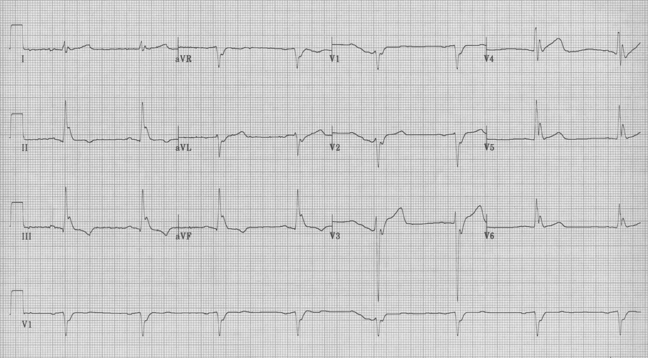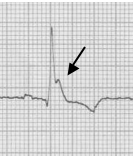23-year-old man found on streets of New York. He remains unresponsive. VS: BP 100/68 HR 50 R 16 O2sat 92%
Answer & Explanation
Answer:
This unfortunate young man spent a very cold night on the streets of New York City in February. His rectal temperature on arrival in the ED was 84°F (28.8C). This EKG is a beautiful example of some of the changes of hypothermia.
Explanation:
As core temperature falls below 32°C (90° F), sinus bradycardia develops, associated with progressive prolongation of the PR interval, QRS complex, and QT interval. As temperature approaches 30°C (86° F), atrial fibrillation commonly develops.
By 30°C, Osborn waves (or J waves) develop in 80% of patients. These additional terminal deflections of the QRS complex are most prominent in the leads with the greatest voltage, and they tend to follow the axis of the QRS complexes. They become more prominent as body temperature drops, and regress gradually with rewarming.

